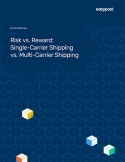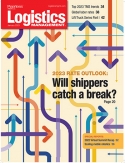Pearson on Excellence: Global growth requires more than emerging markets
A lot of global companies are hoping that emerging markets will prop up their bottom lines. They could be disappointed.
in the News
SMC3 panelists address potential for a recession Berkshire Grey and Locus Robotics partner to achieve cross-platform robotic automation ALAN introduces logistics effort focused on improving access to disaster aid U.S. rail carload and intermodal volumes are mixed, for the week ending January 21, reports AAR AutoStore survey highlights “Five Challenges for Warehouse Management and Fulfillment in 2023” More NewsA lot of global companies are hoping that emerging markets will prop up their bottom lines. They could be disappointed.
India’s growth rate in 2012 was the lowest it’s been in a decade. Economic expansion in Brazil is also slowing. Even China is losing some steam, with industrial production and import levels trending down. Other hotspots still exist, but they may not be enough to provide all of the financial sustenance companies need.
So, if new markets are getting old, what global growth strategy might be more fruitful? How about a formal plan for understanding and catering to changing consumer behaviors?
Consider a recent Accenture survey of 20 sectors that are particularly beholden to new buying patterns, such as video on demand, fair trade goods, low-cost airlines, and digital music. Accenture is forecasting a 20 percent compound annual growth rate for these industry types. That’s 3.5 times faster than the projected growth of emerging economies.
Simply put, huge numbers of consumers are altering their buying behaviors. Millions are becoming more networked—using digital technologies to obtain products and services and advise their friends and family members.
Other large groups are looking for unique shopping experiences. Still more are embracing collaboration and social responsibility—buying local and considering the environment before purchasing. Companies that can identify, speak to, and serve populations like these are likely to grow more quickly than their less insightful peers. Many also share three characteristics: analytics expertise, adaptive mindsets, and agile organizations.
Analytics expertise
Analytics-enabled insights are key to helping companies understand customers and improve customer experiences. Consider gaming company Activision Blizzard which, in 2012, partnered with several analytics firms to perform gaming assessments.
One firm captures data on 190,000 games and 250 million consumers daily—data that Activision Blizzard can use to make better game-development decisions. The second firm specializes in behavioral analytics, which helps Activision Blizzard “balance and optimize” games in real time.
Activision Blizzard has been particularly successful using analytics to thrive in the mobile games market. For one game—Skylanders Cloud Patrol—analyses revealed that users were seldom changing from one character to another. The company responded by tailoring the game to give each character specific powers. Activision Blizzard also has used analytics to customize games by country.
Adaptive mindsets
Companies that align themselves with shifting consumer patterns embrace disruption because they are “psychologically” receptive to perpetual change. These organizations are also good at detecting threats and formulating innovative responses.
Several years ago, a thorough examination of its industry spurred Hertz to court a segment at the edge of its mainstream business—the urban consumer who spurns car ownership in favor of car sharing.
Hertz On Demand began modestly in 2008, offering electric cars, luxury cars, and other options for round-the-clock, short-term usage with hourly rental fees that include gas, insurance, and roadside assistance. Hertz also addressed the new segment via acquisitions, acquiring Paris-based Eileo, a developer of car-sharing technology, and Flexicar, a leading car-sharing company in Australia. By 2012, Hertz On Demand had 130,000 members and projected revenues of more than $30 million.
Agile organizations
Companies need flexible organizational structures to take their consumer insights and create new, scalable offerings. A good example is eBay’s ability to continue benefiting from the expanding segment of consumers who use online platforms to buy and sell products.
In 2000, the newly launched PayPal averaged about 50 times more payments per day than eBay’s proprietary online payment offering. In 2002, eBay acquired PayPal and worked the acquisition into its business model. By 2011, PayPal accounted for 38 percent of eBay’s total revenues.
In 2007, eBay expanded its portfolio of consumer-seller businesses by acquiring StubHub, the fan-to-fan event-ticket reseller. Like PayPal, StubHub’s growth soon began to outpace that of eBay’s auction site. Despite its increasing relationships with sports teams and venues, StubHub’s growth is still generated mostly by individual and part-time resellers. And by smoothly working StubHub into its business model, eBay has benefited greatly.
Each of the above-mentioned companies recognized the potential of identifying changing consumer affinities. They also made sure that their operations were fully able to leverage the resulting opportunities. This ability to understand and take advantage of consumer shifts may not be the only way to stay prosperous, but it might be the most enduring. After all, a given market’s attractiveness ebbs and flows. But change is forever.

About the Author
Mark Pearson马克·皮尔森的董事总经理Accenture’s Supply Chain Management practice. He has worked in supply chain for more than 20 years and has extensive international experience, particularly in Europe, Asia and Russia. Based in Munich, Mark can be reached at[email protected]
Subscribe to Logistics Management Magazine!
Subscribe today. It's FREE!Get timely insider information that you can use to better manage your entire logistics operation.
Start your FREE subscription today!
 Single-Carrier vs. Multi-Carrier Shipping Stategies
Download the white paper to learn about the benefits of multi-carrier shipping with EasyPost.
Download Today!
Single-Carrier vs. Multi-Carrier Shipping Stategies
Download the white paper to learn about the benefits of multi-carrier shipping with EasyPost.
Download Today!
 我们的货运年会万博ag客户端appustry analysts reveals some common themes, largely around the notion that rates are not likely to increase much—if at all—in some modes and will continue declining in others. Does this mean things are stabilizing?
我们的货运年会万博ag客户端appustry analysts reveals some common themes, largely around the notion that rates are not likely to increase much—if at all—in some modes and will continue declining in others. Does this mean things are stabilizing?LM Viewpoint on the 2023 Rate Outlook: Will shippers catch a break? Global Labor Rates: China is no longer a low-cost country View More From this Issue
 2023 Rate Outlook Webcast: Will shippers catch a break?
In this annual webcast, group editorial director Michael Levans hosts our panel of logistics and freight transportation analysts who share their insights on rate patterns in all the major transport modes in an effort to help shippers prepare their freight transportation budget for the coming year.
Register Today!
2023 Rate Outlook Webcast: Will shippers catch a break?
In this annual webcast, group editorial director Michael Levans hosts our panel of logistics and freight transportation analysts who share their insights on rate patterns in all the major transport modes in an effort to help shippers prepare their freight transportation budget for the coming year.
Register Today!








